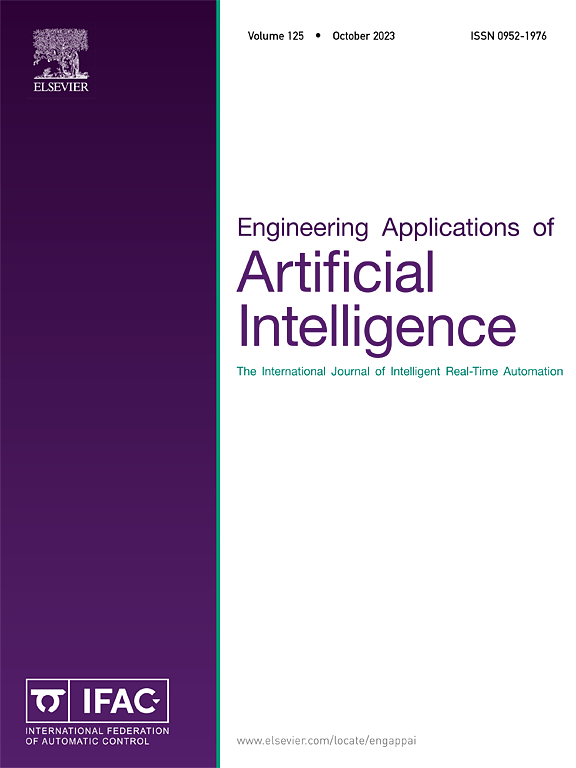基于视黄醇的低光图像增强的无监督细节和颜色恢复器
IF 7.5
2区 计算机科学
Q1 AUTOMATION & CONTROL SYSTEMS
Engineering Applications of Artificial Intelligence
Pub Date : 2025-04-25
DOI:10.1016/j.engappai.2025.110867
引用次数: 0
摘要
基于视黄醇的方法在将低光图像恢复到自然、正常的光外观方面已经证明了有希望的结果。然而,现有的方法往往不可避免地放大隐藏的人工制品,因为视网膜理论没有考虑在暗区各种不确定的退化模式。如果没有模型退化,算法很容易偏离原始区域的颜色和细节。为了解决这个问题,我们提出了一种新的基于视黄醇的微光图像增强的细节和颜色建模方法。建模机制帮助我们基于视黄醇的解决方案学习隐藏在黑暗中的丰富多样的信息。此外,我们开发了一个无监督损失函数来减小Retinex分解的解空间。它鼓励所有组件相互约束,进一步提高对未知复杂场景的适应性。大量的实验表明,我们的方法优于最先进的方法。在SICE数据集上,我们的方法获得了19.71的峰值信噪比(PSNR)和0.773的结构相似指数度量(SSIM),超过了所有比较的PSNR和SSIM方法。我们的框架也稳健地推广到lsrw -华为和lsrw -尼康的基准,在与有监督的同行保持竞争结果的同时,优于无监督的方法。代码可以通过https://github.com/starsky68/DCRetinex访问。本文章由计算机程序翻译,如有差异,请以英文原文为准。
Unsupervised detail and color restorer for Retinex-based low-light image enhancement
Retinex-based methods have demonstrated promising results in restoring low-light images to their natural, normal-light appearance. However, existing approaches often inevitably amplify hidden artifacts because the Retinex theory does not consider the various uncertain degradation patterns in dark regions. Without modeling degradations, an algorithm may easily deviate from the original color and details of regions. To address this issue, we propose a novel detail and color modeling for Retinex-based low-light image enhancement. The modeling mechanism assists our Retinex-based solution in learning rich and diverse information hidden in the dark. In addition, we develop an unsupervised loss function to reduce the solution space of Retinex decomposition. It encourages all components to mutually constrain each other, further improving the adaptiveness in unknown complex scenarios. Extensive experiments demonstrate that our approach performs favorably against state-of-the-art methods. On the SICE dataset, our method achieves 19.71 Peak Signal-to-Noise Ratio (PSNR) and 0.773 Structural Similarity Index Measure (SSIM), surpassing all compared methods in PSNR and SSIM. Our framework also generalizes robustly to the LSRW-Huawei and LSRW-Nikon benchmarks, outperforming unsupervised approaches while maintaining competitive results against supervised counterparts. The code can be accessed via: https://github.com/starsky68/DCRetinex.
求助全文
通过发布文献求助,成功后即可免费获取论文全文。
去求助
来源期刊

Engineering Applications of Artificial Intelligence
工程技术-工程:电子与电气
CiteScore
9.60
自引率
10.00%
发文量
505
审稿时长
68 days
期刊介绍:
Artificial Intelligence (AI) is pivotal in driving the fourth industrial revolution, witnessing remarkable advancements across various machine learning methodologies. AI techniques have become indispensable tools for practicing engineers, enabling them to tackle previously insurmountable challenges. Engineering Applications of Artificial Intelligence serves as a global platform for the swift dissemination of research elucidating the practical application of AI methods across all engineering disciplines. Submitted papers are expected to present novel aspects of AI utilized in real-world engineering applications, validated using publicly available datasets to ensure the replicability of research outcomes. Join us in exploring the transformative potential of AI in engineering.
 求助内容:
求助内容: 应助结果提醒方式:
应助结果提醒方式:


